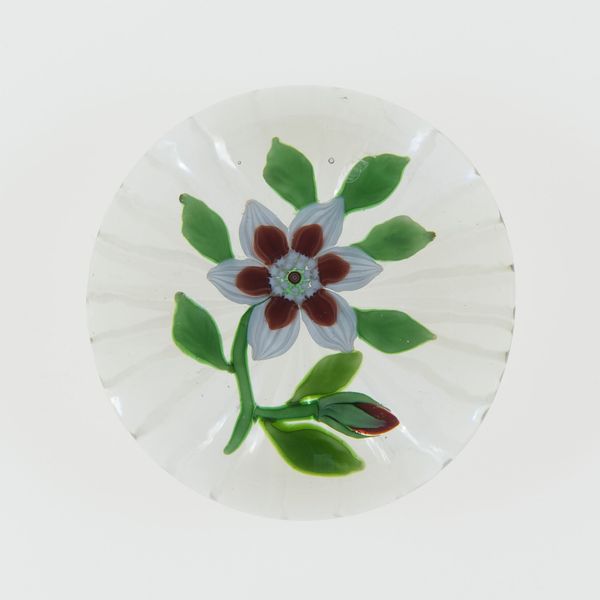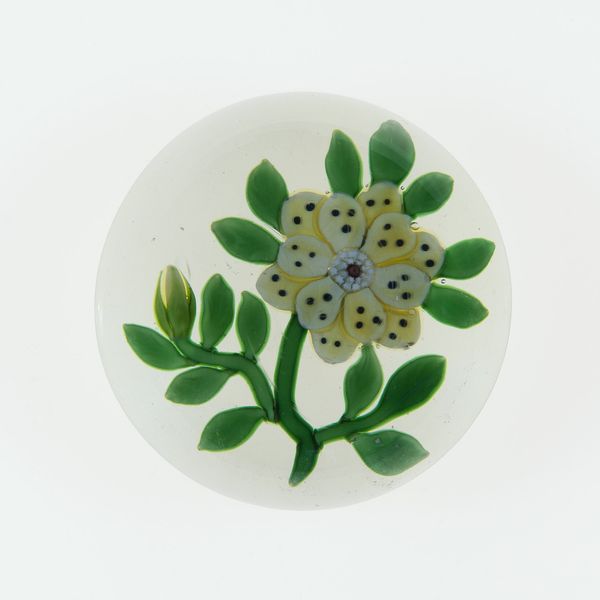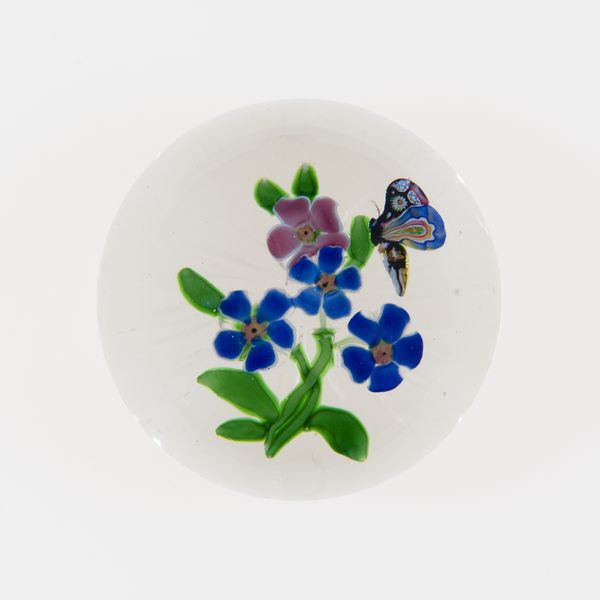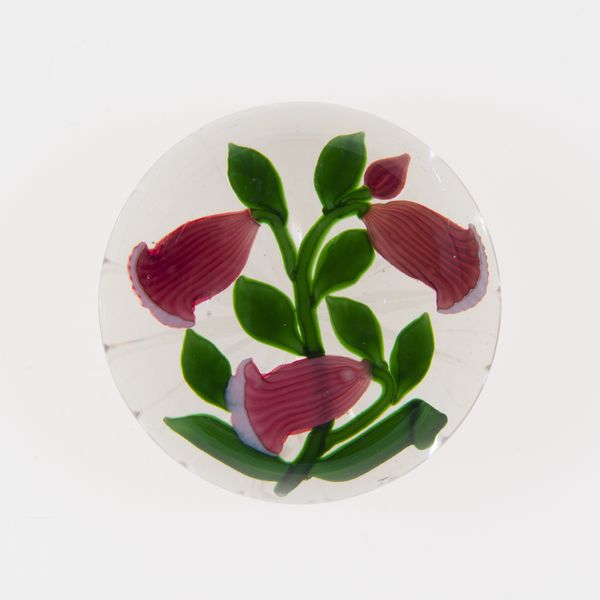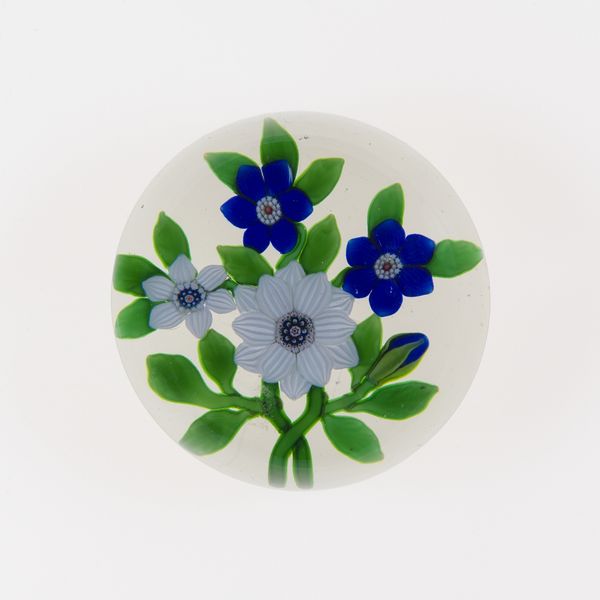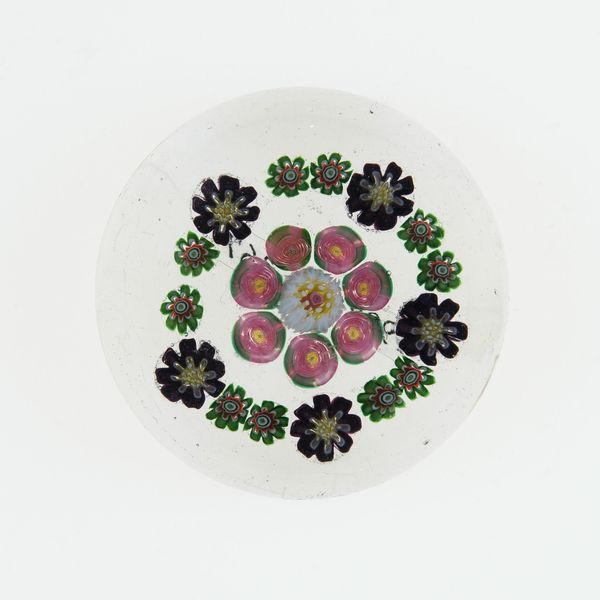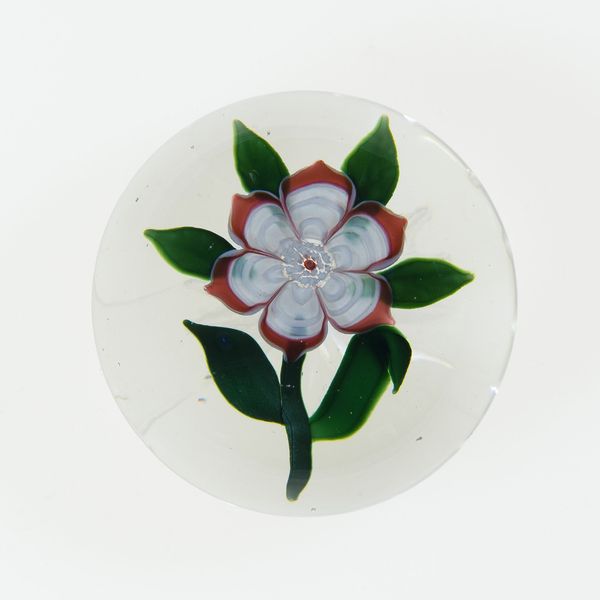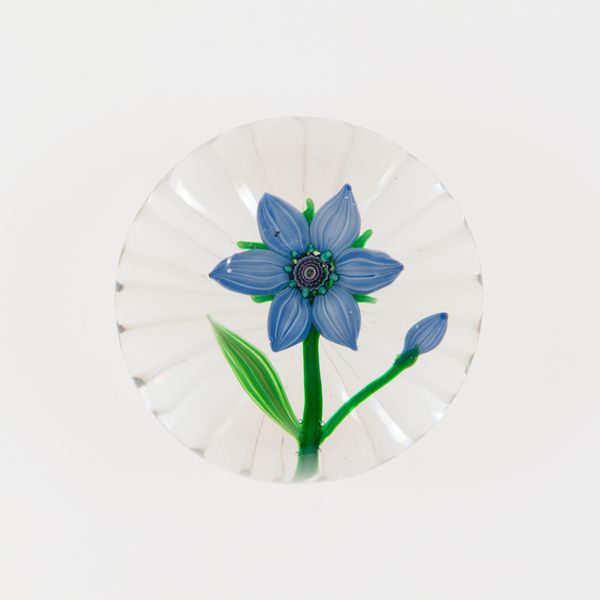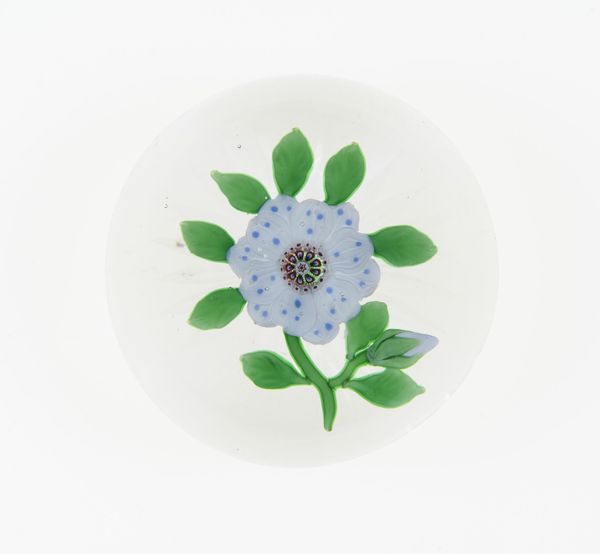
paper, glass
#
paper
#
glass
#
decorative-art
Dimensions: Diam. 7.6 cm (3 in.)
Copyright: Public Domain
Editor: Here we have a "Paperweight," crafted around 1848-1855 by Baccarat Glassworks. It's a delicate floral design encased in glass. It has a sweet and simple appearance but also seems incredibly fragile. What do you see in this piece, especially within its historical context? Curator: What strikes me is the illusion of permanence. Encapsulating this delicate flower in glass speaks volumes about preservation and control – a desire to hold onto fleeting beauty, quite literally fixing it within a specific historical narrative. How might we understand this impulse in light of the rigid social structures and gender roles of the 19th century? Editor: I see what you mean! There's a sense of enforced order, like the flower is trapped. So, you're saying this paperweight maybe mirrors the constrained lives of women at that time? Curator: Exactly. Consider the symbolism of the flower itself, traditionally associated with femininity and domesticity. Imprisoned within the flawless glass, is it not also a powerful metaphor for the social expectations and limitations imposed upon women? Who determined these objects would be of value, and how can we disrupt this narrative by providing critical discourse on the medium and makers? Editor: That's a perspective I hadn't considered. So, what might have been deemed a beautiful ornament can also be viewed as a symbol of constraint? Curator: Precisely. By questioning the dominant narratives, we unearth the complex interplay between art, power, and social conditioning. Editor: This has certainly made me rethink my initial reaction to this seemingly simple object. Curator: And that's precisely why art history, coupled with a critical lens, becomes so crucial. We move beyond simple admiration to understanding its intricate, multifaceted story.
Comments
No comments
Be the first to comment and join the conversation on the ultimate creative platform.
